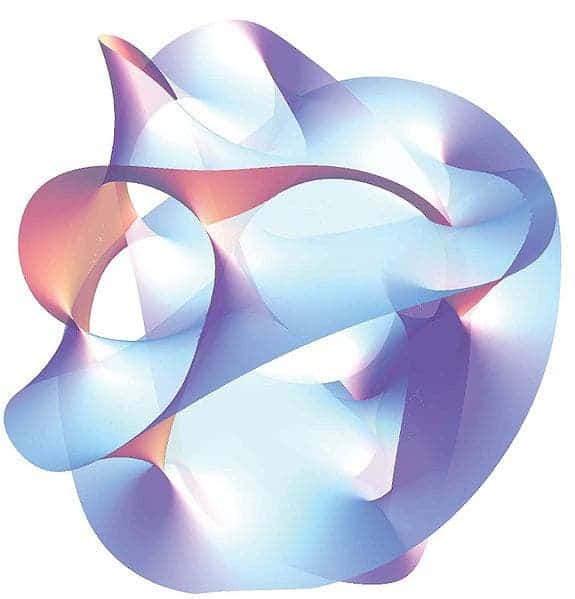In a black hole, Albert Einstein’s theory of gravity clashes with quantum physics; for decades, scientists have tried to find a way to bridge the cap between these monumental theories, but so far, they simply seem irreconcilable. But the conflict could be solved if our Universe were in fact a holographic projection.
String theory, dimensions and holograms

Before we start getting into the research, there’s a few things I want to explain, because the field is complicated and often hard to understand.
First of all, don’t think of a hologram that’s Matrix or Star Trek style. A holograph is a mathematical representation of something inside something else. It’s like a video playing on your screen: it’s there, but it doesn’t actually take place on your screen. Furthermore, on your 2D screen, you can watch 3D and even 4D representations (time being the 4th).
String Theory is an very popular theory among modern physicists. The essential, simplified idea behind string theory is this: all of the different ‘fundamental’ particles in all the Universe are made up of one basic object: a string. String Theory is also an incredibly ambitious idea – it aims to provide a complete, unified, and consistent description of the fundamental structure of our universe – something which is considered to be the Holy Graal of physics.
But String Theory is not proven yet, and researchers have huge problems making the math behind it work. Basically, to explain some of the things that are going on, they need 10 dimensions to make the math work. But to explain other things, they need a 1 dimensional Universe. This idea of a holographic Universe is the best one so far that makes both ideas work. Here’s how.
A holographic Universe

In 1997, theoretical physicist Juan Maldacena proposed an audacious model of the Universe – one in which gravity arises from infinitesimally thin, 1 dimensional vibrating strings; right from the start, this model challenged, thrilled, and scandalized researchers, but there was even more to it: it proposed a 10 dimensional Universe (9 + time), and explained that it was simply a hologram – that all the real action would play out in a simpler, flatter cosmos where there is no gravity. Hard to fathom, right?
But the idea caught pretty well in the world of physicists, because as hard to believe as it seems, it has two major advantages:
– it takes the popular yet unproven string theory one step further to completion
– it bridges the gap between Einstein’s relativity and quantum mechanics.
If, through an analogy, we consider the two theories to be two different languages, with some common things but many differences, Maldacena’s theory would be a Rosetta stone – allowing physicists to translate back and forth between the two languages, and solve problems in one model that seemed intractable in the other and vice versa. But the validity of his claims was still a huge question mark; basically, his claims were a little more than educated, plausible, fitting guesses.
Now, in two different papers, Yoshifumi Hyakutake of Ibaraki University in Japan and his colleagues provide the first pieces of evidence that Maldacena’s ideas are more than wishful thinking.
“They have numerically confirmed, perhaps for the first time, something we were fairly sure had to be true, but was still a conjecture — namely that the thermodynamics of certain black holes can be reproduced from a lower-dimensional universe,” says Leonard Susskind, a theoretical physicist at Stanford University in California who was among the first theoreticians to explore the idea of holographic universes.
In the first paper, Hyakutake computed the properties of a black hole (internal energy, position of the event horizon, entropy and others) based on String Theory, as well as the effects of so-called virtual particles that continuously pop into and out of existence. In the second one, he calculated the internal energy of the corresponding lower-dimensional cosmos with no gravity. The two results matched.
“It seems to be a correct computation,” says Maldacena, who is now at the Institute for Advanced Study in Princeton, New Jersey and who did not contribute to the team’s work.
But even he noted that neither of the model universes explored by the Japanese team resembles our own.
The first one (with ten dimensions) has eight of them forming an eight-dimensional sphere. The lower-dimensional, gravity-free one has but a single dimension, and “its menagerie of quantum particles resembles a group of idealized springs, or harmonic oscillators, attached to one another”, as Nature explains. Still, Maldacena believes this is extremely promising work, and he hopes that one day, all the forces in our Universe can be explained simply through quantum mechanics and string theory.






